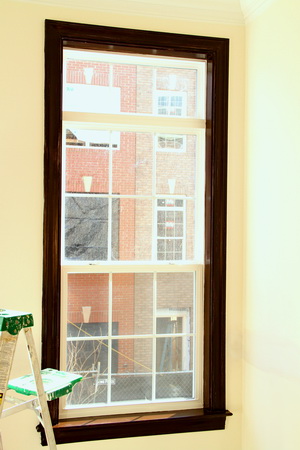
Tips on Selecting the Right Paint for a Project from an Experienced Northern Virginia Painting Contractor
Paint seems at first glance like an extremely simple substance: just some colored liquid that you smear up onto a wall. Yet the amount of thought and engineering that goes into a paint mixture is actually quite involved. Depending on the intended purpose of the paint, it will be engineered with different components, and different amounts of each component.
Paint is composed of four different components: binder, pigments, solvents, and additives. The binder is the substance in the paint that forms a strong film and adheres to the surface. The pigments are solid particles suspended in the binder. The solvents are liquid components that evaporate out of the film as part of the drying/curing process. The additives are extra chemicals stirred into the mixture to provide certain physical or aesthetic properties to the film.
One of the critical ways that engineers change the properties of paint is by tweaking what is called the PVC, or pigment-volume concentration. The pigment-volume concentration is the percent of the total paint volume that is composed of pigment particles. It stands to reason that the higher the PVC, the higher the ratio of pigment to binder in the total volume of the paint, so paints with higher PVC have more pigment and less binder, and paints with lower PVC have more binder and less pigment.
Binder tends to dry clear, strong, and shiny. Pigments, on the other hand, are opaque, colored, “flat”, and do not have any adhesive properties. Without binder, pigments would simply flake off the surface. Low PVC paints, therefore, have more of the components of binder: they are stronger, shinier, and less opaque than high PVC paints. High PVC paints have strong optical properties, providing rich color and not too much extra reflection. However, they are prone to “chalking”, which is when loose pigments flake off the surface as a fine-grained dust. Due to the optical properties, low versus high PVC paints are classified based on “gloss”. The more binder in the mixture, the shinier (aka, “glossier”) the paint will be. Therefore, low-PVC paints are known as “gloss” paints. At the opposite end of the spectrum, high-PVC paints are known as “flat” paints.
“Glossy” paints can be distractingly shiny; most people prefer the aesthetic properties of “flat” paints over large surface areas. However, because they do not have the strength or the adhesion of glossy paints with high binder content, flat paints are not suitable for areas where they will be subjected to any sort of moisture, grease, or mechanical abrasion. Flat paints do not hold up under cleaning, and therefore they cannot be used in areas that are likely to be stained, or where they will weather a lot of human traffic. Examples of places that glossy paints are used are: trim, doorways, stairways, bathrooms, and kitchens. Examples of places that flat paints are used are: large surface areas (walls and ceilings) of living rooms, dining rooms, and adult bedrooms.
There are also middle-of-the-road options, which have a medium sheen, hold up to cleaning better than flat paints (though not as well as glossy paints), and are suitable for diverse applications. These paints are known as “semigloss”, “eggshell” or “satin”, due to the way they reflect light. They have a more balanced ratio of binder to pigments than the flat and glossy extremes.
So when considering whether to use high-gloss, satin, or flat paint for your project, all you have to do is consider whether you need the durability of gloss, the soft optics of flat, or something in the middle.